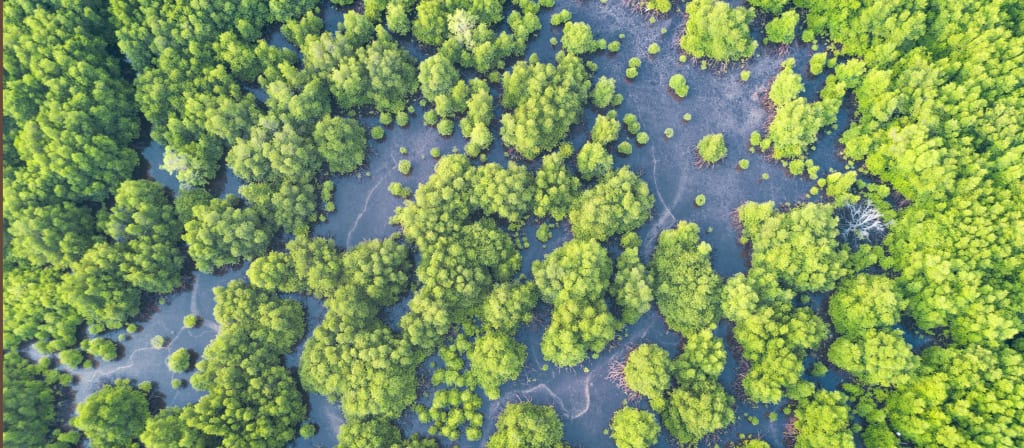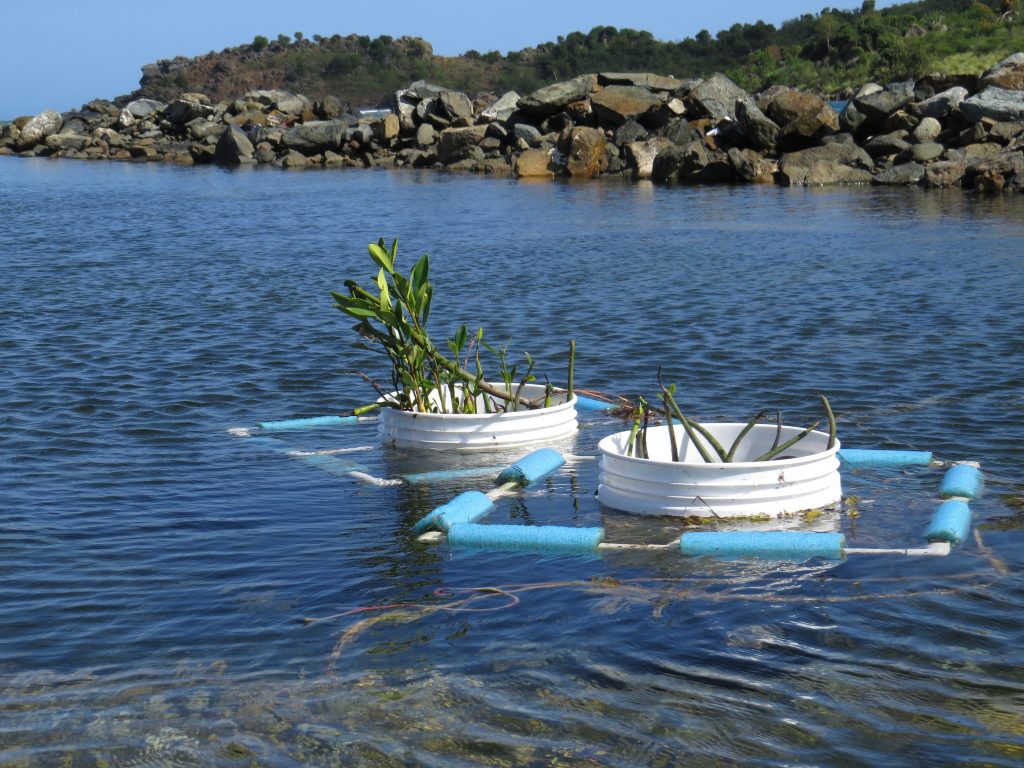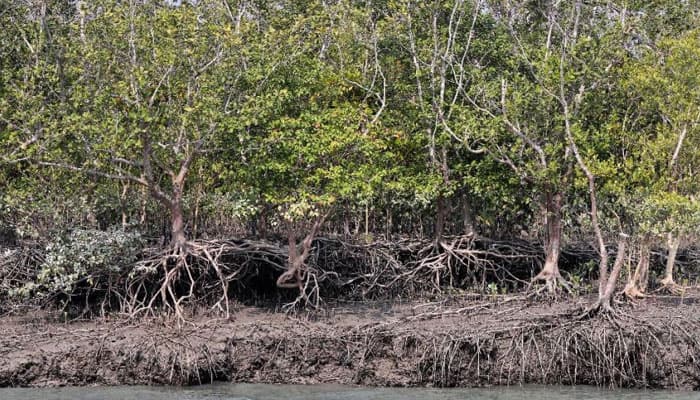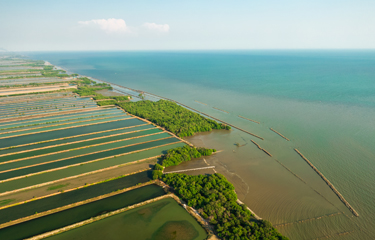FEATURE Protect Our Future calls for mangrove conservation

Protect Our Future members marked Global Wetlands Day on Monday by protesting the destruction of mangroves at an Old Prospect Road site after a developer removed the vegetation and filled the area without planning permission. The group met at the site with Martin Keeley, director of the Mangrove Education Project in Cayman, to talk about the significance of losing yet another mangrove site to development. “The Department of Environment has put together a Mangrove Conservation Plan. It’s been sitting in Cabinet for six months, seven months, and nobody’s acting on it and we need that in place so that there is some kind of control over this sort of thing because this is happening on a constant basis,” Keeley said. Keeley, who has worked for 20 years on an international Mangrove Action Project, spoke about the significance of Cayman’s wetlands and the current lack of action in protecting them. He said that if the Mangrove Conservation Plan is approved by Cabinet, it will protect all mangrove species and allow the DoE to take enforcement action into their own hands. Mangroves act as juvenile nurseries for 60-70% of species found on coral reefs, and stores large quantities of carbon dioxide in their roots, Keeley said. READ MORE
GLOBAL
Device mimics the mangrove’s water-purifying power

GLOBAL – The mangrove tree survives in its subtropical habitat by efficiently converting the salty water of its environment into fresh water — an engineering feat that has long baffled scientists. Now, a team of researchers in the lab of Yale engineering professor Menachem Elimelech has developed a water-purifying device that mimics the mangrove. In addition to offering a better understanding of plants’ plumbing systems, it could lead to new desalination technologies, his research team said. The results appeared Feb. 21 in Science Advances. “We’re showing the mechanism that’s been proposed for how mangroves work,” said co-author Jay Werber, a former graduate student in chemical and environmental engineering in Elimelech’s lab. “We’re not biologists, but we’re coming at this from an engineering perspective.” The device, which the researchers call an artificial mangrove, combines the desalinating effects of the mangrove’s root, the capillary pumping of the leaves, and the water-conducting capability of the stem. Key to its success is its ability to generate a high level of negative pressure, similar to what you create when drinking through a straw. In the synthetic mangrove, evaporation from specially designed membranes — acting as “leaves” — creates a large negative pressure, which drives desalination of salty water through a semi-permeable membrane “root.” READ MORE
International mangrove forest experts suggesting optimistic cause for global mangrove conservation

GLOBAL – More than a decade ago, a team of mangrove experts warned that mangrove forests were being lost faster than almost any other ecosystem, including coral reefs and tropical rainforests. Nonetheless, the situations are getting better now. An international team of 22 researchers led by National University Singapore (NUS) from 24 institutes including Dr Stefano Cannicci from The Swire Institute of Marine Science and School of Biological Sciences, the University of Hong Kong (HKU), found that there is now cause for optimism, with the global loss rate of mangrove forests less alarming than previously suggested. After studying various earlier presented works, the team found that globally, mangrove loss rates have reduced by almost an order of magnitude between the late 20th and early 21st century – from what was previously estimated at 1% to 3% per year, to about 0.3% to 0.6%. The drastic drop in the loss rate is attributed greatly to the successful mangrove conservation efforts. This heightens conservation optimism amongst broader projections of environmental decline. “The team deduced that the reduction in mangrove global loss rates has resulted from improved monitoring and data access, changing industrial practices, expanded management and protection, increased focus on rehabilitation, and stronger recognition of the ecosystem services provided by mangroves,” explained Associate Professor Daniel Friess from the Department of Geography of NUS. READ MORE
AFRICA
Egypt launches project to plant mangrove trees along Red Sea coast

EGYPT – Egypt has announced an ambitious plan to expand mangrove forests by launching the largest mangrove planting project along the Red Sea, according to Sayyed Khalifa, director of the mangrove forestry project in the Governorate. The project is funded by the Ministry of Scientific Research, in cooperation with the ministries of Agriculture and Environment and the Red Sea Governorate, he said. The project comes as part of efforts to address the risks brought on by climate change, according to Khalifa. Khalifa added in a press statement on Thursday that the project also comes as part of Egyptian President Abdel Fattah al-Sisi’s directives to expand environmental tourism projects and take advantage of natural reserves. Four plant nurseries have been established for mangrove trees in the Safaga, Hamata, and Shalateen areas of the Red Sea Governorate, as well as the Nabaq nature reserve in South Sinai. READ MORE
How South Africa’s mangrove forests store carbon and why it matters

SOUTH AFRICA – Scientists around the world are looking for ways to remove carbon dioxide from the atmosphere. This gas is a natural component of the atmosphere, released by processes of respiration and decomposition of organic matter. But human activities that involve the burning of fossil fuels such as coal have released a lot of carbon dioxide into the atmosphere since the Industrial Revolution of the 1800s. The accumulation of carbon dioxide in the atmosphere is directly linked to global warming. Climate-related risks for the environment and for human societies have been observed in the form of increased mean temperatures and a higher frequency at which extreme events – heatwaves, droughts, wildfires, floods, and storms – are occurring around the world. One of the natural ways that carbon dioxide can be taken out of the atmosphere is the process of photosynthesis by plants. Plants absorb carbon dioxide, use the carbon for their growth, and release the oxygen back into the air. This forms part of the global carbon cycle and allows ecosystems to act as “carbon sinks” for atmospheric carbon. Marine ecosystems are particularly interesting as potential carbon sinks or stores. Coastal wetlands like mangroves, salt marshes and seagrasses can store more carbon than terrestrial ecosystems. This is because the waterlogged soils preserve the organic carbon and prevent decomposition. The soils also build up vertically over time and if left undisturbed, this “blue carbon” can accumulate for thousands of years. READ MORE
AMERICAS
Millions of people’s food supply depends on super-urinating fish

BAHAMAS – For the mangrove forests that line the coast of Abaco Island in the Bahamas, fish pee is a precious resource. While fish such as cubera and gray snappers roam the mangroves in search of a meal, they excrete “fish pee” through their gills which, among other substances, contains the valuable nutrient nitrogen. However, it turns out that some of these fish do more than their fair share of this important and messy work, scientists reported February 26 in the journal Science Advances. These MVPs spend more time swimming around their mangrove homes than other members of the same species. The busy fish spread more nitrogen around during their wanderings, fertilizing the mangrove trees and algae growing on their roots so they can grow lush and feed the fish, crabs, and other animals that people depend on in turn. “There are certain individuals that really do have disproportionate roles in the cycling and distribution of nutrients in these [ecosystems],” says Jacob Allgeier, a coastal ecologist at the University of Michigan in Ann Arbor and coauthor of the new study. “It’s essentially fueling this food web that is so important for the subsistence of millions of people…throughout the world.” Scientists have long understood that a diverse array of species of plants, animals, and other organisms is critical for healthy, resilient ecosystems. Researchers have also recognized that certain so-called keystone species can play an outsized role in keeping an ecosystem running smoothly—such as mangrove trees that buffer the coastline from storms, hold soil in place to prevent erosion, and shelter many kinds of animals. READ MORE
Hurricanes fertilize mangrove forests, shape coastal landscape of the Florida Everglades

USA – The destructive power of a hurricane appears to do plenty of good for mangroves in the Florida Everglades. When Category 3 Hurricanes Wilma (2005) and Irma (2017) struck Florida, mangroves took a beating, particularly in the west coast. Trees lost their canopies. Taller ones snapped and several were uprooted. Seedlings were scattered to the winds. Storm surge partially submerged trees on the front line. Then the storm surges deposited gray, phosphorus-rich mineral sediment from the ocean floor on top of mangrove soils. That sediment increased phosphorus concentrations in the soil, fueling mangrove regeneration and recovery, according to a new study conducted by researchers at FIU, Louisiana State University, and William & Mary. “When you hear about hurricanes, they create negative impacts to the coastal landscape because of infrastructure damage and ecosystem damage for mangrove forests,” said Edward Castañeda, an FIU research assistant professor and the study’s lead author. “When you do these studies and you dig into information for 20 years, you realize there’s a positive side to these storms.” Using data from the Florida Coastal Everglades Long Term Ecological Research program funded by the National Science Foundation, Castañeda and fellow researchers realized these storms have a positive effect and were able to help mangroves increase their soil elevation, facilitate their rapid recovery and help their young branch out and find new homes. It’s a welcome impact from an otherwise destructive force of nature as mangrove forests do plenty of good for people. They blunt the impact of hurricanes. They absorb damaging winds and prevent floodwaters from moving farther inland. They bear the brunt of the wind and storm surge, so people living in developed areas don’t have to. READ MORE
Mangroves on the move: Habitat restoration efforts underway

VIRGIN ISLANDS – 0n the eastern end of Jost Van Dyke, where sunshine beats down on expansive white beaches, is a quiet little inlet. The pool is sheltered from crashing waves by a line of spray-soaked boulders. On its surface floated two white plastic buckets filled with several dozen mangrove seedlings. New efforts are under way to restore mangroves in the Virgin Islands, especially where previously healthy forests were damaged by the 2017 hurricanes. With new funding from the Governor’s Office, a team of researchers is taking the lead in giving seedlings a better shot at growing to maturity. Conservation scientist Dr. Louise Soanes, a consultant to the Department of Disaster Management on the SMART Communities Project, said the funding helped supply materials for needed habitat structures, working in tandem with other community-based restoration efforts. The SMART Communities Project focuses on community-based disaster risk reduction and local climate change-based initiatives, with support from the Community Disaster Risk Reduction Fund managed by Caribbean Development Bank. The mangrove replanting is part of a larger effort, called “Establishing Flood-Resilient SMART Communities through Non-Government Partnerships,” to help residents be better prepared for natural disasters. This nearly $1.2 million project began in June 2017 and focuses on Jost Van Dyke as well as Sea Cows Bay, East End and Long Look on Tortola. READ MORE
‘Mangrove massacre:’ DEP investigating mangroves ripped out

USA – More mangroves have been ripped out and damaged at Tropicana Park in Cape Coral and this isn’t the first time. The city ripped out mangroves near Four Mile Cove last summer and is facing fines. Now, the state is investigating. It’s almost deja vu for Alyn Kay. “We have more mangrove destruction in one of the city’s parks,” he said. Kay sent in pictures of what he calls a “mangrove massacre” to the Department of Environmental Protection. The Department confirmed they are looking into it, but a Cape Coral spokesperson said in an email, “The city has not performed any mangrove trimming at this site.” The Florida DEP enforces the Mangrove Act, which regulates the trimming and alteration of mangroves. Recent, we learned Cape Coral is on the hook for thousands of dollars in penalties and fines for ripping up mangroves at the city’s Four Mile Cove. READ MORE
ASIA
Indiscriminate cutting of Mangrove trees creating havoc in West Bengal's Sundarbans

BANGLADESH – Indiscriminate cutting of Mangrove trees due to prawn culture and fishing by a section of local communities is creating havoc in the Sundarbans – the largest continuous mangrove forest in the world along the Bay of Bengal say environmentalists. For decades, the mangrove belt of Sundarbans has witnessed cutting of mangrove tress by a section of local communities in certain areas especially in the reserve forests administered by two districts – North and South 24 Parganas district of West Bengal. Experts say that local communities are increasingly engaging in prawn culture and fishing in these areas. Spanning more than 10,000 square kilometres, the Sundarbans region of Bangladesh and India is the biggest mangrove forest in the world and also the most critical area for Bengal tiger survival. Sprawled out across 6,017 square kilometers, the Bangladesh side of the forest covers nearly 60 percent of the total area of the Sundarbans. The rest is in India in the state of West Bengal. A recent incident has brought to light how the Mangrove trees were being cut at Basanti block’s Bharatgarh gram panchayat’s Anandabad area. The trees were being felled for over a week before authorities got to know of the matter. READ MORE
Global investors exposed to mangrove deforestation linked Southeast Asian shrimp industry

THAILAND – Shrimp producers in Southeast Asia – and the investors backing them – face financial risks from mangrove deforestation, according to a recent report from Planet Tracker. Mangrove forests benefit coastal ecosystems in a multitude of ways, including preventing coastal erosion, protecting inland areas from storm surges, filtering water, and providing nursery habitat for many fish species. Though they only account for 1 percent of carbon sequestration from forests, they make up 14 percent of carbon sequestration from the ocean. But mangroves are disappearing at an alarming rate. Globally, the rate of destruction of mangrove forests compared to their total area is five times higher than rainforests, according to Planet Tracker. In Southeast Asia, shrimp farming is the cause of 30 percent of mangrove deforestation and coastal land use change. That deforestation threatens the ecological sustainability of the shrimp industry, and its financial viability. Investors around the world could be at risk as rules come into force preventing the importation of products linked to past and future deforestation, according to Planet Tracker Director of Research Matthew McLuckie. Overproduction has led to falling prices, which in turn have caused large-scale commercial producers to expand capacity so they can protect supply chains, according to the report. These low prices offer producers few market incentives to invest in costly sustainability systems. This race to the bottom means that environmental conditions are expected to deteriorate and deforestation is expected to increase. READ MORE
Like this newsletter?
Pease consider donating to MAP to keep it going.
Giving could never be easier | ACTION ALERTS Enough! Pledging zero tolerance to attacks against environmental and human rights defenders. SIGN THE PETITION PETITION – Sea turtles or condominiums?
Sand mining and construction work would wipe out a marine biodiversity hotspot and destroy the livelihoods of local people, who have not been consulted. Please SIGN! PETITION – Save Penang! Reject the 3-Islands Reclamation!
The lack of public consultation and detailed information about the project is shocking in view of the size of proposed reclamation which is 4,500 acres or 7 square miles
PLEASE SIGN
PETITION – Save Pulau Kukup National Park – second largest mangrove island in the world. Sign The Petition Like this newsletter? Pease consider donating to MAP to keep it going. Giving could never be easier 
Mangrove Restoration Map VIEW MAP HERE 
Restoring The Natural Mangrove Forest
Watch movie 
Community Based Ecological Mangrove Restoration in Rufiji Delta VIEW VIDEO Video: Mangroves for the Future – A look bacK. As the latest phase of Mangroves for the Future (MFF) draws to a close, this video highlights some of the project’s most successful initiatives – from local women supporting national park management in Viet Nam to an island in the Maldives that has become a model for waste management, and everything in between. View Here WANT TO GET INVOLVED?
Follow and Join MAP!
   
Like this newsletter? Pease consider donating to MAP to keep it going. Giving could never be easier 

VOLUNTEER OPPORTUNITY 
MANGROVE ISSUES Want to learn more about mangroves?
Our short presentation will give you a better understanding of the issues we are working to solve. WATCH PRESENTATION What is CBEMR? Easy to follow fact sheet – CLICK HERE What is EPIC? – The Ecosystems Protecting Infrastructure and Communities (EPIC) project: the role of ecosystems as protective barriers against climate induced hazards MANGROVES APP AVAILABLE
A pictorial field guide for easy identification of various mangrove species and learning about the mangroves ecosystem. CLICK HERE View MAP’s uploaded Videos at MAPmangrover’sChannel
Question Your Shrimp Consumer/Markets Campaign!
WATCH VIDEO Mangrove Restoration in Asia – Watch Short Video The Value of Mangrove Forests View Video CBEMR Experience Exchange MAP 2017 English Subtitles
VIEW THE VIDEO Mangroves: Guidebook to Malaysia – Click Here
Mangrove rehabilitation in Asia – Local Action and cross-border Transfer of Knowledge for the Conservation of Climate, Forests and Biodiversity VIEW VIDEOS HERE SHARE MAP'S VISION
CLICK HERE to watch short introductory video. Together we can work "at the roots of the sea". Our short documentary, Reducing the Risk of Disaster through Nature-Based Solutions : Mangroves

Exclusive Interview with Alfredo Quarto, Co-Founder and Executive Director of Mangrove Action Project – See more
Marvellous Mangroves Curriculum The Marvellous Mangroves Education Forum is an online hub for those utilizing the Marvellous Mangroves (MM) Curriculum. It gives students, teachers and anyone interested in mangroves, the opportunity to learn and share ideas themed around the curriculum, to connect and communicate with others around the globe whilst exploring mangroves from your computer or on the go. VISIT 
The award-winning Marvellous Mangroves (MM) curriculum educates children on the importance of mangroves and their ecological functions, teaching them about modern challenges and mechanisms for sustainability. VIEW VIDEO Marvellous Mangroves Curriculum in Bangladesh – WATCH VIDEO
MARVELLOUS MANGROVES IN BRAZIL
En Portuges 
Marvellous Mangroves – A Curriculum-Based Teachers Guide. FOR MORE ON MAPs AWARD WINNING CHINA MANGROVE CURRICULUM VISIT

VIMEO SHOW
VISIT OUR "MM" WEBPAGE Check out our presentation for more details on Marvellous Mangroves Read this 10 page history of the development of MAP’s educational curriculum VIEW DOCUMENT
Article in Canada's Green Teacher Magazine – Read More
Like this newsletter? Pease consider donating to MAP to keep it going. Giving could never be easier 
Green Planet Fundraising Assists MAP – LEARN MORE
Volunteer Opportunities with Mangrove Action Project CLICK HERE
"Question Your Shrimp" Campaign Question Your Shrimp- Don't Buy or Sell Imported Tropical Shrimp! Sign the Petition Learn more about the affects of the shrimp industry on mangroves by visiting our blog
Editor’s Note: Mangrove Action Project’s Executive Director, Alfredo Quarto was interviewed about shrimp by Green Acre Radio’s Martha Baskin
LISTEN TO INTERVIEW Sign the Consumer's Pledge to avoid imported shrimp
Not yet a MAP News subscriber?
Click here to subscribe. Note to Our Readers: We strive to keep active links in our newsletter. However, due to circumstances beyond our control, occasionally links to stories may become broken. If you find a link to a story is not functioning, please cut and paste the headline into your browser search bar. In most cases you should be able to locate the original story.
|